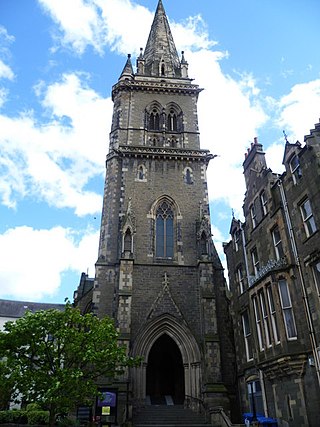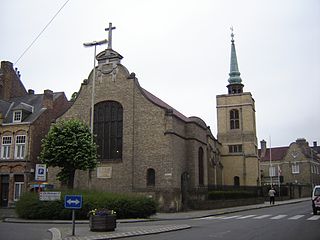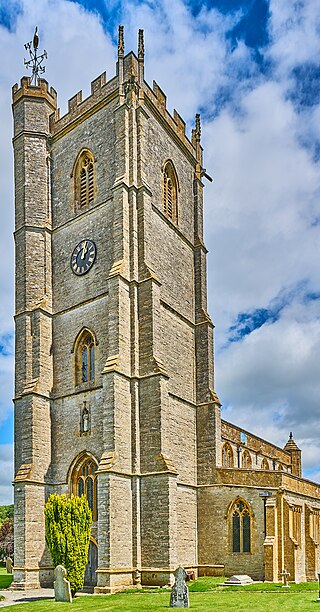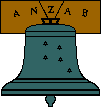
Change ringing is the art of ringing a set of tuned bells in a tightly controlled manner to produce precise variations in their successive striking sequences, known as "changes". This can be by method ringing in which the ringers commit to memory the rules for generating each change, or by call changes, where the ringers are instructed how to generate each change by instructions from a conductor. This creates a form of bell music which cannot be discerned as a conventional melody, but is a series of mathematical sequences.
Campanology is the scientific and musical study of bells. It encompasses the technology of bells – how they are founded, tuned and rung – as well as the history, methods, and traditions of bellringing as an art.

John Taylor Bell Foundry (Loughborough) Limited, trading as John Taylor & Co and commonly known as Taylor's Bell Foundry, Taylor's of Loughborough, or simply Taylor's, is the world's largest working bell foundry. It is located in Loughborough, in the Charnwood borough of Leicestershire, England. The business originated in the 14th century, and the Taylor family took over in 1784.

St. Paul's Cathedral is an Anglican cathedral in the city of Dundee, Scotland. It is the cathedral and administrative centre of the Diocese of Brechin in the Scottish Episcopal Church.
Method ringing is a form of change ringing in which the ringers commit to memory the rules for generating each change of sequence, and pairs of bells are affected. This creates a form of bell music which is continually changing, but which cannot be discerned as a conventional melody. It is a way of sounding continually changing mathematical permutations.

A "ring of bells" is the name bell ringers give to a set of bells hung for English full circle ringing. The term "peal of bells" is often used, though peal also refers to a change ringing performance of more than about 5,000 changes.

In campanology, a peal is the special name given to a specific type of performance of change ringing which meets certain exacting conditions for duration, complexity and quality.

Saint George's Memorial Church, Ypres (Ieper), Belgium, was built to commemorate over 500,000 British and Commonwealth troops, who had died in the three battles fought for the Ypres Salient, during World War I. It was completed in 1929.
Call change ringing is a branch of the art of change ringing, in which a group of English-style full-circle bell ringers are instructed continually to create different sequences, or changes, of the bells' striking order. Each command from the leader or "conductor" of the ringing results in a new sequence of sounding the bells. Each sequence is repeated until the next command or "call".
Rudhall of Gloucester was a family business of bell founders in the city of Gloucester, England, who between 1684 and 1835 cast more than 5,000 bells.

The Church of St Barnabas in Queen Camel, Somerset, England was built in the 14th century and has been designated as a Grade I listed building.

The church of St Andrew's, Hornchurch, is a Church of England religious building in Hornchurch in England. It is a Grade I listed building.
The Central Council of Church Bell Ringers (CCCBR) is an organisation founded in 1891 which represents ringers of church bells in the English style.

The Australian and New Zealand Association of Bellringers, known as ANZAB, is the organisation responsible for the promotion of English-style "full circle ringing" – namely change ringing and method ringing in bell towers with a peal of bells – across Australia and New Zealand.

St Maurice's Church, Winchester was a parish church in the Church of England in Winchester, Hampshire.
Christopher Hodson was an English bellfounder from London, who was active between 1669 and 1696. He cast several notable sets of bells, including Great Tom of Oxford, and the bells for the Chapel at Merton College, also in Oxford, which are known as the oldest peal of bells in the United Kingdom which were cast by one founder. The bells are also noted for their rather unusual ringing room; a gallery snaking around the inside of the tower.
John Murphy was an Irish bellfounder. His foundry, which started making bells in 1843, cast bells for many churches in Ireland and elsewhere, including several rings of bells hung for change ringing.

St. Luke's Episcopal Church is an Episcopal church in Atlanta, Georgia. The parish was founded in 1864, with the current building on Peachtree Street constructed in 1906.

The Suffolk Guild of Ringers for the Diocese of St Edmundsbury and Ipswich is a society and charity supporting the bell ringers and rings of bells in the Diocese of St Edmundsbury and Ipswich who practice the art of change ringing. The Guild was established on 2 April 1923 at Ipswich and covers over 200 rings of bells in the county of Suffolk in the area that falls within the diocese boundary.
Campanology is the scientific and musical study of bells. It encompasses the technology of bells – how they are cast, tuned, and rung – as well as the history, methods, and traditions of bellringing as an art. Articles related to campanology include:













